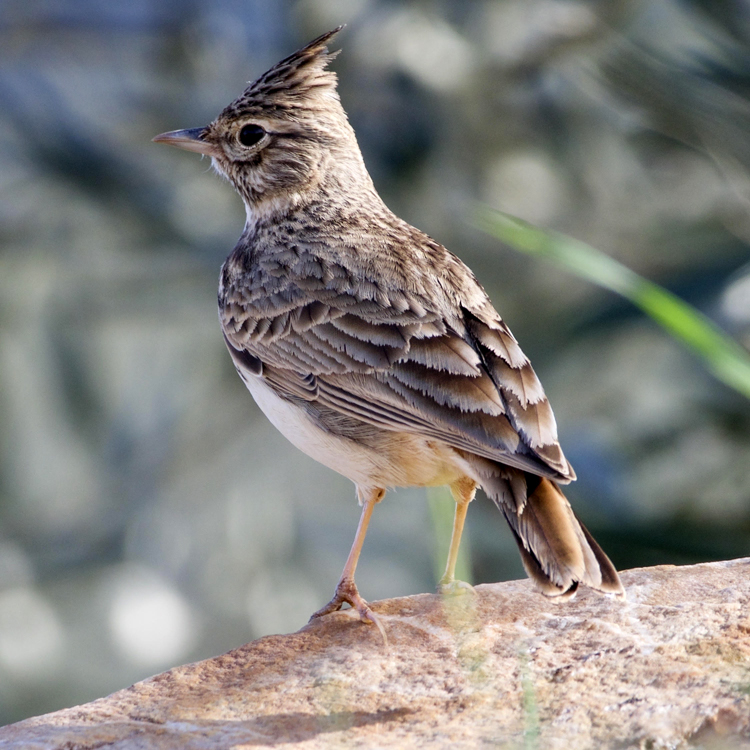Larks (Alaudidae) present a heavily worn plumage for the most part of the annual cycle, to the point that identification field guides typically depict lark species in both fresh and worn plumages. The ephemeral nature of lark feathers is even more strange knowing that larks are among the few passerines undergoing a single annual molt. Contrarily, a majority of songbirds moult feathers twice a year. Larks are dull-colored ground-dwelling birds living in open areas, thus occupying a niche where abrasion by air and soil particles is maximal. Authors observed that lark feathers have unmelanized fringes and are prone to breakage. Larks may have turned need into a virtue: they possibly cannot avoid a premature damage of their fragile plumage, and instead of incurring the cost of molting repeatedly, they gain the advantage of a form of crypsis known as disruptive camouflage. When feathers break, they create a serrated random pattern, cancelling out the effect of smooth lines more easily detected by predators. informacion[at]ebd.csic.es: Negro et al (2019) Adaptive plumage wear for increased crypsis in the plumage of Palearctic larks (Alaudidae). Ecology https://doi.org/10.1002/ecy.2771
https://esajournals.onlinelibrary.wiley.com/doi/full/10.1002/ecy.2771








 Las altas temperaturas están provocando que las lagunas y las marismas de Doñana pierdan agua rápidamente
Las altas temperaturas están provocando que las lagunas y las marismas de Doñana pierdan agua rápidamente



